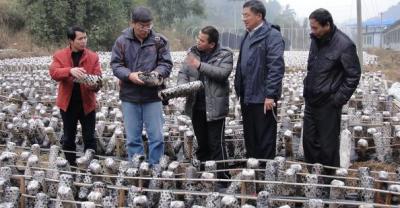The life history of edible fungi and medicinal fungi
Edible fungi usually refer to large fungi that can be eaten by people, collectively referred to as mushrooms, deaf people, such as Lentinus edodes, fungus, straw mushrooms, mushrooms and so on. There are more than 600 kinds of edible seedlings that grow naturally. Some of them are of high value, but they are currently used in commercial cultivation of less than 5%.
It has a bright future.
Edible fungus has a unique and delicious taste, and some are known as "Shanzhen". They are rich in proteins, amino acids and vitamins, and their nutrition is between meat and vegetables, which is called "meat in vegetarian". Modern science has proved that many kinds of mushrooms have anticancer effects.
The masses wrote poems and praised them.
Looks like Ganoderma lucidum, looks like flowers, is nutritious and tastes good
Strengthen and strengthen the body with multiple effects, treat diseases, prevent cancer and lower blood pressure.
The production cycle of edible mushroom is short and the economic benefit is high. For example, artificially cultivated volvariella volvacea can produce mushrooms in 10 days and end in 20-25 days, and cultivated mushrooms begin to produce in 25 days. 50-70 days after harvesting three tide mushrooms, fresh mushrooms can be harvested 70-100kg or more per 100kg material; 80-90 days after substitute cultivation of Lentinus edodes, 5000 kg Lentinus edodes can be harvested in a shed of 667 square meters (1 mu) in winter and spring.
Go. Therefore, as long as we master the technology of cultivating edible fungi, the economic benefits it produces are difficult to compare with other crops. In three-dimensional agriculture, edible fungi are interplanted between crop rows. It shows great vitality for achieving the goal of high yield and high efficiency. for example, interplanting Pleurotus ostreatus in sugarcane field can harvest about 500 kg of mushrooms per 667 square meters (1 mu).
Different kinds of edible fungi need different nutrients, and the current cultivation can be divided into two categories. One is that it can grow directly on dead wood. It is called wood saprophytic fungus, such as Lentinus edodes, Auricularia auricula, hericium Erinaceus. Most of them can decompose organic matter such as essential quality, cellulose, hemicellulose, starch and protein, while the other kind is called manure (grass) saprophytic bacteria growing on dung grass pile or soil. They can use organic matter and humus in dung grass as nutrients, such as mushrooms, straw mushrooms, Coprinus comatus and so on. There is also a kind of edible fungus that can not be cultivated with artificial culture materials, only when its hyphae are symbiotic with plant roots. According to the supply of G9 points of Sophora japonica, it is called symbiotic edible seedlings, such as Tricholoma matsutake, red mushroom, delicious beef liver and so on. In addition to nutrients, cultivation should also meet the living conditions of edible fungi, such as humidity, moisture and air humidity, ventilation, pH (pH value) and light. The conditions required by different graphs are not the same.
With the rise of edible mushroom industry. with the expansion of production scale and annual production, diseases and insect pests have become a prominent problem in the production of edible fungi. However, due to the short growth period of edible fungi, its fruiting body is vulnerable to drug damage and is directly eaten, so it is necessary to pay more attention to environmental hygiene, minimize the source and infection of diseases and pests, and advocate not or less use of pesticides. When forced to use, safe drugs with high efficiency, low toxicity and low residue should also be selected.
- Prev

Fungal Polysaccharide: the Soul of Edible Fungi
Fungal polysaccharides: the soul of edible fungi, the source of activating cells. What is a fungus? Fungi are different from animals and plants and are a kind of microorganisms different from bacteria. ...
- Next

There is a bright future for growing edible fungi in tea.
At present, the development of China's tea industry shows an imbalance in the supply of resources. At the same time, in the field of edible fungus cultivation, we are looking for new materials to ease the demand for raw materials.
Related
- Fuxing push coffee new agricultural production and marketing class: lack of small-scale processing plants
- Jujube rice field leisure farm deep ploughing Yilan for five years to create a space for organic food and play
- Nongyu Farm-A trial of organic papaya for brave women with advanced technology
- Four points for attention in the prevention and control of diseases and insect pests of edible fungi
- How to add nutrient solution to Edible Fungi
- Is there any good way to control edible fungus mites?
- Open Inoculation Technology of Edible Fungi
- Is there any clever way to use fertilizer for edible fungus in winter?
- What agents are used to kill the pathogens of edible fungi in the mushroom shed?
- Rapid drying of Edible Fungi

